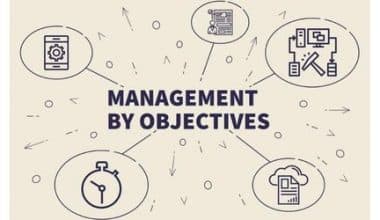Have you ever been interrupted while working on a project and ended up disorganized as a result? Unfortunately, most of us have been there. However, there is a way to handle these difficulties in real time without jeopardizing team productivity.
The process of identifying and correcting project interruptions as rapidly as feasible is known as incident management. This means more time spent on making an impact, not to mention finishing the project at hand.
We’ll go over the incident management process and best practices for implementing your own strategy so that you’re ready if and when the next project incident occurs.
What is Incident Management?
Incident management is a process used by IT Operations and DevOps teams to respond to and address unforeseen incidents that may have an impact on service quality or operations. The goal of incident management is to identify and correct problems while preserving normal service and minimizing business impact.
IT Incident Management
Incident management in a company’s IT operations, also known as ITIL incident management, addresses a wide range of issues that might disrupt service and business operations, such as a laptop crashing or a printer malfunction, as well as Wi-Fi connectivity issues and network downtime.
Incident management works as one part of the ITSM service model within the scope of ITSM (IT service management). Rather than focusing on the development of systems and technology, incident management for IT is more user-centered, trying to keep systems operational—whether the system is an app or an endpoint (e.g., a sensor or desktop computer).
The Benefits of Incident Management
Incidents can disrupt operations, cause temporary downtime, and contribute to data and productivity loss. It is becoming increasingly important for firms to take incident management techniques seriously, as there are numerous benefits to doing so.
Among these benefits are:
#1. Increased productivity and efficiency
There can be established standards and processes that help IT teams respond to events more effectively and prevent future incidents. Additionally, machine learning assigns incidents to the appropriate groups automatically, allowing for speedier resolution.
Dedicated agent portals for issue resolution provide access to all relevant information in a single location and can use AI to give proposed solutions promptly. A Major Incident Management portal facilitates rapid resolution by bringing together the appropriate resolution teams and stakeholders to restore services.
#2. Transparency and visibility
Employees may quickly call IT assistance to trace down and resolve problems. They can communicate with IT online or mobile to gain a better grasp of the status of their issues from start to finish, as well as the consequences. Intuitive omnichannel self-service and open, two-way communications provide a superior consumer experience.
#3. Increased level of service quality
Agents can prioritize issues based on established processes, which can also help to ensure the continuity of business operations, which are brought together to manage work and collaborate using a unified platform for IT processes.
By bringing together the relevant agents to handle tasks and cooperate utilizing a unified platform for IT processes, incident management enables IT to quickly restore services. IT can utilize advanced machine learning and data models to automatically categorize and assign incidents based on historical data patterns.
#4. More information about service quality
Incidents can be logged into incident management software, which provides insight into service time, incident severity, and whether there is a consistent type of incident that can be mitigated. The software can then provide reports for visibility and analysis.
Service Level Agreements (SLAs) Incident management systems assist in the development of processes that provide insight into SLAs and whether or not they are met.
#5. Incident avoidance
Once an incident has been discovered and mitigated, the information gained from that incident and the appropriate solutions can be used for future occurrences for speedier resolution or overall prevention. Increase the rate of incident deflection by lowering ticket and call volumes using self-service portals and ServiceNow chatbots—employees may find solutions on their own before needing to report an incident, effectively preventing issues before they impact users with AIOps.
#6. Improved mean time to resolution (MTTR)
When there are defined processes and data from previous incidents, the average length of time to resolution decreases. To minimize bottlenecks, accelerate incident resolution with machine learning and contextual assistance. To minimize noise, prioritize, and remediate, AIOps integration decreases incidents and mean time to resolution (MTTR).
#7. Downtime reduction or elimination
Incidents produce downtime, which can slow or halt corporate activities and services. Well-documented incident management practices aid in the reduction or elimination of downtime caused by an incident.
#8. Enhanced customer and employee satisfaction
A company’s smooth operations are reflected in its products or services. Customers will have a better experience if firms do not suffer downtime or service interruptions as a result of an incident. Similarly, giving omnichannel alternatives, where employees may submit incidents via self-service portals, chatbots, email, phone, or mobile, enables them to easily contact support to track and resolve incident management concerns.
What Steps are Involved in the Incident Management Process?
The steps involved in the incident management process include;
#1. Incident Logging
An incident is identified and recorded in user reports and solution analyses; once identified, the incident is logged and classified. This is critical for how future events will be handled and for incident prioritizing.
#2. Escalation and notification
The timing of this step may vary from incident to incident based on the categorization of the incident. Smaller occurrences may also be reported and acknowledged without triggering an official notice. Escalation occurs when an incident prompts an alarm, and the required processes are done by the individual who is assigned to manage the alert.
#3. Incident classification
Incidents need to be sorted into the right category and subcategory in order to be easily discovered and treated. Typically, classification happens automatically when the relevant fields are put up for classification, prioritized is assigned depending on the categorization, and reports are promptly created.
#4. Incident prioritization
The right priority can have a direct impact on the SLA of incident response, ensuring that business-critical issues are resolved on time and that neither customers nor workers experience any delay in service.
#5. Investigation and diagnosis
When an incident is reported, the IT team conducts an investigation and gives a remedy to the employee. If a resolution is not available right away, the incident is escalated to the appropriate teams for additional investigation and diagnosis.
#6. Incident resolution and closure
An IT team is supposed to address events as rapidly as feasible by applying suitable priority procedures. So communication can aid in the resolution and closure of tickets, with the prospect of automation assisting in ticket resolution. Once an incident is resolved, additional logging and awareness of how to prevent the incident from recurring or reducing the time to resolution are performed.
Best Practices for Improving Your Incident Management Process
#1. Keep a record of everything.
Always report everything into a single tool with as much detail as possible, regardless of the level of incident, urgency, or caller position. Keep track of all issues to reduce reaction and resolution time. There are also automatic systems for reconciling logs.
#2. Fill in the blanks
Fill out everything completely to guarantee that it is detail-oriented for any future investigation, information collection, or reports.
#3. Maintain the cleanliness of your categorizations
Maintain the cleanliness of your categorizations by avoiding extraneous categories and subcategories that can be sorted elsewhere or defined in the fields. Avoid using alternatives such as “other” as much as feasible.
#4. Maintain an up-to-date team
Standardize processes to guarantee that each team member follows the same procedures and responds to each incident in the same way—this keeps quality consistent and uniform.
#5. Keep track of everything and stick to tried-and-true solutions.
Solutions do not necessarily have to be novel or original. If there are current successful solutions, employ them to keep procedures moving ahead and standardized.
#6. Employee assistance
Training personnel at all levels properly and regularly has a huge organizational value. Non-IT workers can be trained to respond to incidents at various levels, allowing IT personnel to respond to higher-level incidents more swiftly. Teams that have received proper training are more effective as a whole and communicate more effectively.
#7. Configure critical alerts
Avoiding undue overload is one of the most critical parts of incident management. Plan carefully how events are classified and what those classifications entail to avoid incidents going unnoticed and response times running too lengthy.
Defining service level indicators that are used to identify the hierarchy of prioritizations—for example, prioritizing root cause analysis over surface-level symptoms—is a good place to start.
#8. Prepare your team for on-call duties.
Teams must communicate who is in charge of situations and when. Create an on-call schedule to assist teams in ensuring that a responder with the appropriate expertise is accessible in the case of an incident, and then make any necessary revisions based on how overburdened individual employees are with various issues.
#9. Creating communication guidelines
Create standards for successful communication—this is critical for team collaboration and effectiveness. The standards should specify which channels employees should utilize, what they should say, and how communication should be documented.
When there is no standard for how employees are supposed to engage and communicate, improper standards might cause extra stress and tension during reaction periods. Well-documented communications allow teams to refer back to confirm communication and pass on any relevant details without information loss.
#10. Streamline the process of change
Determine the degrees or types of changes that individuals can make and who must approve them. Depending on the system and the individual, modifications may require approval or additional confirmation. Ensure that the board that oversees changes is easily accessible so that change procedures may be implemented quickly and effectively.
#11. With the knowledge gained, improve systems.
Examine incidents and determine the cause of the incident. Identify preventative steps that could have been implemented for the incident and those that should be taken in the future. This also ensures that all documentation is completed and that suitable liability and compliance training is provided, if necessary.
Problem Management vs. Incident Management
A problem is a collection of episodes with no identified root cause. An incident is an occurrence that causes something to stop working properly. Problem management allows it to identify the root cause of an issue affecting your services and can help you prevent issues from occurring in the first place, whereas incident management is a reactive approach to something that goes wrong in the short term—an incident allows systems to continue to run, but a managed incident may not necessarily solve a problem, which tends to be more long-term.
Request Management vs. Incident Management
Incidents occur when something fails or an issue arises that requires resolution, triggering incident management processes. A request is more along the lines of anything that the employee need, such as access, things, or equipment.
What are the Tasks and Roles of Incident Managers?
- Set up processes to fulfill corporate needs.
- Follow protocols and meet SLAs
- Manage teams at various levels
- Create reports and keep track of Key Performance Indicators (KPIs).
- When a serious incident needs to be resolved, be a point of escalation.
- Collaborate with other teams
Incident Management Tools
Incident management is accomplished using a combination of tools, processes, and people. Here are a few of the most prevalent incident management tool categories:
- Incident tracking: Every incident should be tracked and documented so that you can spot trends and create long-term comparisons.
- Chat area: Real-time text communication is critical for team diagnosis and resolution of the incident. And it delivers a rich set of data for subsequent response analysis.
- Video call: For many instances, video chat supplements text chat; team video chat can help discuss the results and plan out a response strategy.
- Alert system: Jira Service Management, for example, interfaces with your monitoring system and controls on-call rotations and escalations.
- Documentation tool: Confluence, for example, can capture incident state papers and postmortems.
- Statuspage: Communicating status with internal stakeholders and customers with Statuspage keeps everyone informed.
Conclusion
Handling project incidents will be a breeze now that you know how to design an incident management process. With the seven best practices outlined above, you can ensure that your plan is as effective as possible, saving time and money.
- INCIDENT MANAGEMENT SYSTEM: All You Need To Know
- Risk Management Strategies: 5+ Strategies You Can Follow Now!!!
- Business Continuity Plan: Why Is It Important
- MANAGEMENT TEAM: Company Management Team Tasks






